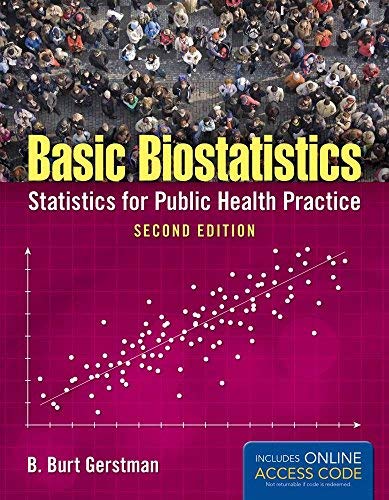Mental health care. This exercise uses data from a historical study on mental health service utilization.j Fourteen
Question:
Mental health care. This exercise uses data from a historical study on mental health service utilization.j Fourteen Massachusetts counties are considered. The explanatory variable is the reciprocal of the distance to the nearest mental healthcare center (miles−1
, REC_DIST). The response variable is the percent of patients cared for in the home (PHOME). Table 14.6 lists the data.
(a) Construct a scatterplot of REC_DIST versus PHOME. Describe the pattern of the plot. Would correlation be appropriate here?
(b) Calculate the correlation coefficient for REC_DIST and PHOME.
Interpret this statistic.
(c) Observation 13 (Nantucket) seems to be an outlier. Remove this data point from the data set and recalculate the correlation coefficient. (The variable PHOME2 in the data set LUNATICS.SAV has already removed this observation for you.) Did removing the outlier improve the fit of the linear model?
(d) This exercise plotted the reciprocal of distance to the nearest healthcare center and patient care at home. Now plot direct distance from the healthcare center (variable DIST) versus PHOME2 (percent cared for at home with the outlier removed).
Why should we avoid calculating the correlation coefficient for the variables dist and PHOMEZ?
Step by Step Answer:

Basic Biostatistics Statistics For Public Health Practice
ISBN: 9781284067583
2nd Edition
Authors: B.Burt Gerstman





